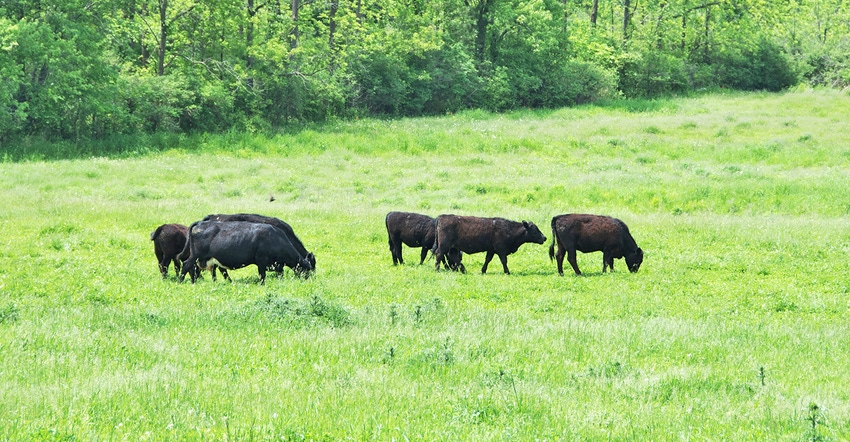Time to remove fescue seed heads to reduce toxins
Toxicosis reduces weaning weights, conception rates, daily gain and milk production.
May 22, 2023

Forage producers should begin removing seed heads from tall fescue grass pastures soon to reduce toxic endophytes that thwart herd health and profits, says University of Missouri Extension state forage specialist Craig Roberts.
Seed heads typically emerge by mid-May in most of Missouri’s tall fescue pastures. They contain five times more ergovaline than leaves and have little nutritive value, says Roberts. In early summer, seed heads can also become infected with ergot, a highly toxic fungus that grows on the seed. Ergot infects most grasses and small grains, not just tall fescue.
There are several ways to remove seed heads: 1) Baling before seed heads form; 2) Clipping seed heads and resetting paddocks; 3) Chemical spraying.
Early hay production lets the plant rebound and produce new leaf growth. Clipping paddocks allows the grass to stay in a vegetative, leafy state longer. Clipping results in grasses that are higher in nutrition and digestibility.
Use a management-intensive grazing system that encourages cows to rotate through small pasture paddocks. Don’t let cattle graze too short.
Fescue toxicosis costs Missouri’s beef industry alone more than $160 million each year in reduced weaning weights, conception rates, daily gain and milk production. Cattle run high internal body temperatures and respiration rates and experience reduced blood flow, which can cause lameness and loss of hooves in the winter.
Studies show that clipping see heads increases average daily gains in stocker cattle and improves pregnancy rates and calf weaning weights.
You May Also Like
.png?width=300&auto=webp&quality=80&disable=upscale)


